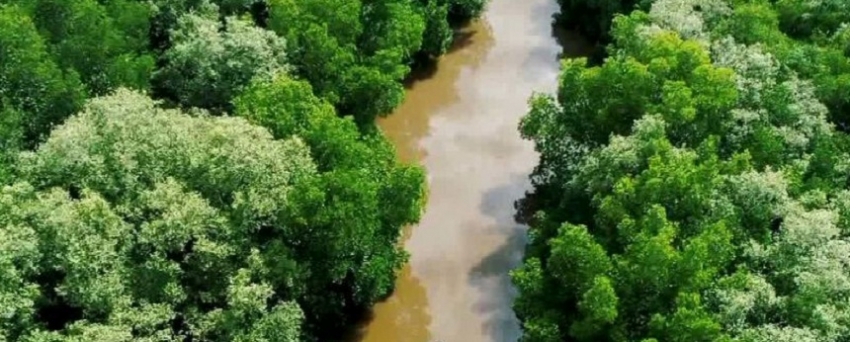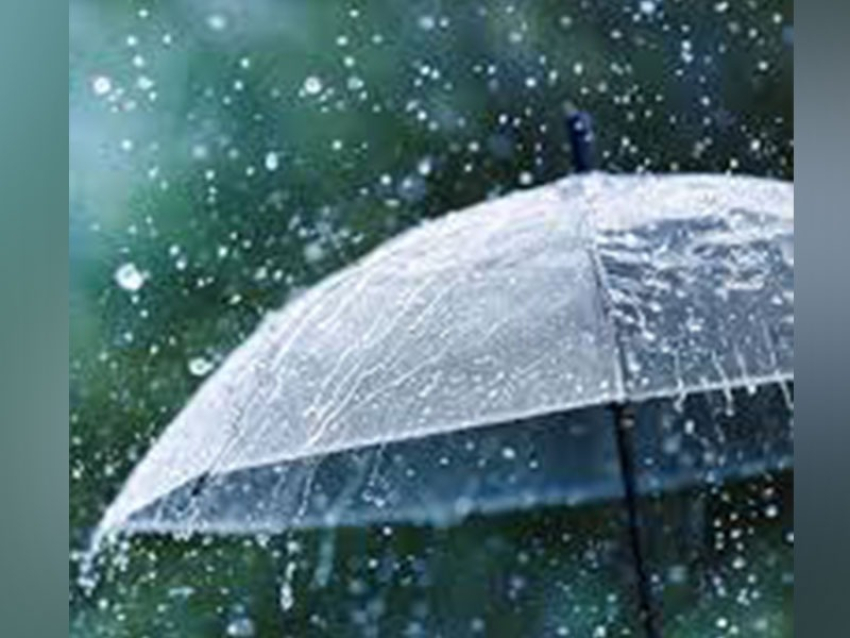When Sri Lanka was hit by a tsunami in 2004, some areas were protected by mangrove forests. When Sri Lanka was hit by a tsunami in 2004, some areas were protected by mangrove forests.Sri Lanka saves its mangroves Mangroves are trees which -- unlike almost all other plants -- thrive in saltwater. Sri Lanka is a mangrove hotspot with 22 species flourishing along its coasts, deltas and lagoons. Read: The battle to save Sri Lanka's leopards
In 2015, Sri Lanka announced that it would protect all of its mangroves -- the first country to make that declaration. The tsunami experience wasn't the only factor in the decision. Mangrove forests help to create healthy seas because they act as nurseries for fish, prawns, crabs and other marine animals that breed among the trees' stilt-like roots.
They also play a role in combating the climate crisis because they have carbon-storing superpowers, locking down more carbon than a terrestrial forest the same size.
But the importance of mangroves wasn't always recognized. They typically occupy prime coastal real estate -- as a consequence, two-thirds of the world's mangroves have been lost.
In Sri Lanka, one-third of the mangroves have been uprooted since 1990 to make way for expanding cities, coastal development and shrimp farms, says Anuradha Wickramasinghe -- chair of Sudeesa, a nonprofit that oversees mangrove conservation and replanting projects. "People were only looking at short-term profits," he says. "They destroyed the environment."
Sri Lankan spotted deer are important prey for leopards. Sri Lankan spotted deer are important prey for leopards.Hikkaduwa is one of the top diving spots on the island thanks to its impressive coral reefs and
Sri Lanka is one of the world's 34 "biodiversity hotspots," and the country is heavily dependent on its biodiversity for tourism. Pictured, a male peacock puts on a show in the country's Yala National Park.here are up to 5,000 elephants left in Sri Lanka.There are up to 5,000 elephants left in Sri Lanka. Sri Lankan temple monkeys taking a well deserved rest.
Photos: Sri Lanka's incredible wildlife Sri Lankan temple monkeys taking a well deserved rest.
Hide Caption
4 of 10
Sri Lankan leopards each have a unique pattern of spots.
Photos: Sri Lanka's incredible wildlife
Sri Lankan leopards each have a unique pattern of spots.
Hide Caption
5 of 10
Sri Lankan spotted deer are important prey for leopards.
Photos: Sri Lanka's incredible wildlife
Sri Lankan spotted deer are important prey for leopards.
Hide Caption
6 of 10
Blue whales -- the largest animals on Earth -- swim in Sri Lankan waters.
Photos: Sri Lanka's incredible wildlife
Blue whales -- the largest animals on Earth -- swim in Sri Lankan waters.
Hide Caption
7 of 10
Wild boars in Yala National Park.
Photos: Sri Lanka's incredible wildlife
Sri Lanka is one of the world's 34 "biodiversity hotspots," and the country is heavily dependent on its biodiversity for tourism. Pictured, a male peacock puts on a show in the country's Yala National Park. Sri Lanka is one of the world's 34 "biodiversity hotspots," and the country is heavily dependent on its biodiversity for tourism. Pictured, a male peacock puts on a show in the country's Yala National Park.There are up to 5,000 elephants left in Sri Lanka.
Photos: Sri Lanka's incredible wildlifeElephants enjoying a stroll and a leafy snack.
03 sri lanka wildlifeelephants---Sri-Lanka-tourism04 sri lanka wildlife05 sri lanka wildlifeSri-Lanka-tourism-images---Yala---National-Park---Leopard-01-(1)02 sri lanka wildlifeBlue whale06 sri lanka wildlifesri-lanka-tourism-images---hikkaduwa[1]sri-lanka-tourism-images---Hill-Country---Rolling-Tea-Estates-02-(1)
Where mangroves were destroyed, fishing yields plummeted from around 20 kilograms (44 lbs) to around four kilograms (nine lbs) a day, says Wickramasinghe. Seafood is the major source of animal protein in the island nation. Fishermen and their families faced starvation, says Wickramasinghe.
Read: Star student on a mission to clean up the world's water
The Sri Lankan government took action by partnering with Sudeesa and US-based conservation group Seacology to implement a program of mangrove preservation and replanting that covers 35,000 hectares.
Women lead the way
Jeewanthi Perera is one of Sudeesa's 38,000 volunteers. The 34-year-old lives in Kalpitiya, a small fishing village on the shore of Puttalam Lagoon on Sri Lanka's west coast.
Perera says the mangroves saved her family from a desperate situation.
Her first husband died in 2004. She remarried in 2014, but the relationship did not work out and Perera found herself living as a single mother with no income and four children to raise.
All Sudeesa's volunteer groups are headed by women because "they can influence the men," says Wickramasinghe, adding that in his opinion, women are better at organizing the finances.
Jeewanthi Perera (center) and other volunteers plant mangrove saplings.
Jeewanthi Perera (center) and other volunteers plant mangrove saplings.
Hard at work on Kalpitiya's beach, planting a row of fragile mangrove saplings in gloopy black mud, Perera says the restoration of the mangroves has been pivotal for her.
Alongside its mangrove work, Sudeesa give microloans to women to help them establish small businesses. Perera borrowed 15,000 Sri Lankan rupees ($83) and bought material to make fishing nets. Her eldest son, who is 16, now earns up to 500 rupees ($2.80) a day catching fish, shrimp and crabs, ensuring the family has enough to eat.
"Mangroves are good for us because they help prawns grow" says Perera. "This project is empowering women in this community. I'm proud of what I've done."
Paid Content
Sri Lanka: Why People Are Snapping Up This New Face Mask?
Sri Lanka: Why People Are Snapping Up This New Face…
Disease Prevention World
L.A. Lakers Owner Jeanie Buss Snaps Up Beach House




















